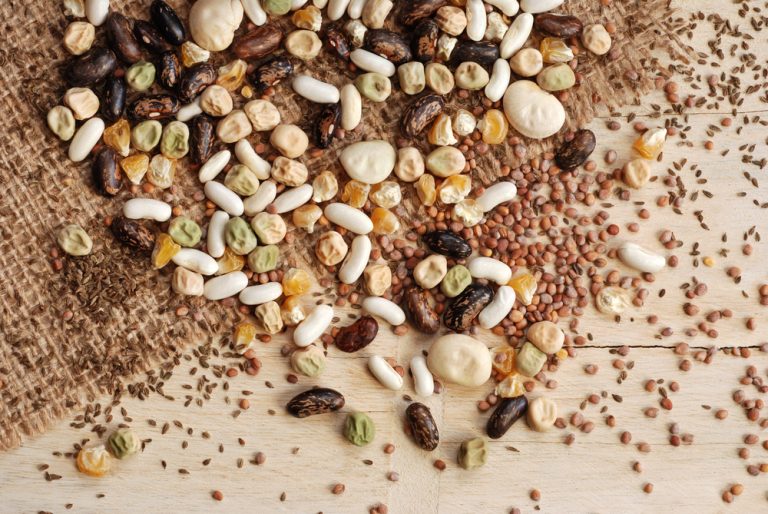How to Identify and Rescue Dying Plants

Signs that indicate your plant isn’t doing too well
Here are some signs that your plant is dead/dying and in need of urgent care.
- If your plant’s growth has stunted: If your plant is no longer producing as many leaves or flowers as it used to, or isn’t growing as fast as it once did – it may be a sign that it isn’t healthy any more. Most plants that lack nutrients or access to adequate sunlight, are incapable of producing large glossy green leaves. They may even start growing leaves and flowers much smaller than average in size. Identifying the problem is a step in the right direction, even though it may take 4 – 8 weeks for your plant to become healthy again.

- Yellow leaves dropping/curling: Yellow leaves are a result of moisture stress that plants face, and it is because of over-watering or under-watering them. The leaves may additionally be curling inwards or dropping towards the sides which may be because of a mineral deficiency in which case you need to get your soil checked. If the discoloration takes place on the wide surface of the leaf accompanied with tears, you may have a pest problem on your hands.

- Discolored and smelly roots: If you suspect that your plant may be dying, then it is worth inspecting the roots to see what’s going on down there. Roots which are rotten will have a pungent stench which is difficult to miss – a clear indication your plant is barely holding onto life. If the plant’s roots are soft, tender and flexible then the plant is alive although it just may be dormant.
Don’t mistake a dormant plant for a dead or dying one!

- White spots on plant stem and leaves: Several houseplants may often have to battle the spread of white powdery mildew on the surface of their stems, leaves and even fruits. It’s a fungal disease that drains the strength and nutrients of your plants, leaving them weak and wilting. The fungus causes the stems to become twisted and discolored, leaving them shriveled and unable to do a good job at efficiently transporting nutrients around the plant’s body.

- Falling sideward and pale appearance: Sometimes you just know when your plant has lost its sparkle. It’s not standing upright anymore and the color of flowers and leaves have lost their vibrancy. It may be because of the lack of sunlight that causes the plant to stretch to increase its chances of finding more sunlight. Give your intuition more credit when you feel your plant isn’t doing well enough!

Reviving a dying plant.
Now that you have physically inspected your plant and diagnosed it with a problem, it is time to get down to help it regain its chance at a healthy life.
Dealing with fertilizer burn.
Over-fertilizing is more common than most gardeners would like to believe and is the result of being impatient or overly enthusiastic about your plant’s growth. If you see a yellow, withering plant you need to recheck how much fertilizer you’re giving it and whether the fertilizer type is appropriate to the plant. Scoop out any excess fertilizer and water your plant more often than normal to wash away the excess salts and minerals that it does not need.
Don’t let the water runoff though, that will just result in transporting your excess minerals to another plant!
Pests and diseases.
Depending on which pest or disease has taken over your plant, the treatment to help it become healthy again will differ. However, some general steps to take will remain the same. If you see the leaves or flowers of a plant showing evidence of infection, you need to cut them off immediately so that they don’t assist in spreading the disease to other parts of the plant. If your plant has been infected with Ramularia, you need to spray it with Bordeaux mixture and if it has fallen prey to Blight, you will need to gently shower its leaves with a sulfur solution. The treatment for each plant disease will be unique.
To avoid pests, you will have to use an insecticide/pesticide for immediate results, but there are some general practices you can adopt as well. Start watering your plant more regularly because flea beetles, spider mites, and several other pests aren’t particularly fond of a wet environment and won’t attack your plant. Place wood shavings near your plant to avoid caterpillars and slugs and if you’re dealing with aphids at the end of spring, it’s a good idea to spray the leaves with soapy water or rhubarb slurry.
Nutrient deficiencies.
| Nutrient | Symptoms |
| Nitrogen | Yellowing of leaves at the bottom of the plant (old leaves). |
| Calcium | Yellowing of leaves at the top of the plant (new leaves). |
| Phosphorus | Edges of leaves appear to be crispy and burnt with a tinge of purple/dark green. |
| Magnesium | Yellowing in the middle of the leaf or at the arrowhead tip. |
| Sulfur | Yellowing of older than newer leaves in order. |
Replace the macronutrients in your soil at least once a month or once every growing season to replenish the soil. Upgrade your soil by adding in compost or manure that is from a reliable source. Spread leaf mold around the plants fighting nutrient deficiencies. You may have to replant the plant into a different location altogether, one with richer and more fertile soil. If you haven’t been using fertilizer for your plant, it is time to add in NPK fertilizer, so at least the most important nutrients can be ruled out.
Is it worth saving your plant?
Sometimes, the amount of energy, resources, and time that needs to be spent to revitalize a dying plant just isn’t worth it. If it is brown, smells funny, and seems dead – then it probably is dead with the exception of certain rubber plants.
It might be wise to cut your losses, start fresh and turn over a new leaf.
Until then, the battle for survival in your garden or indoor pots must go on!



